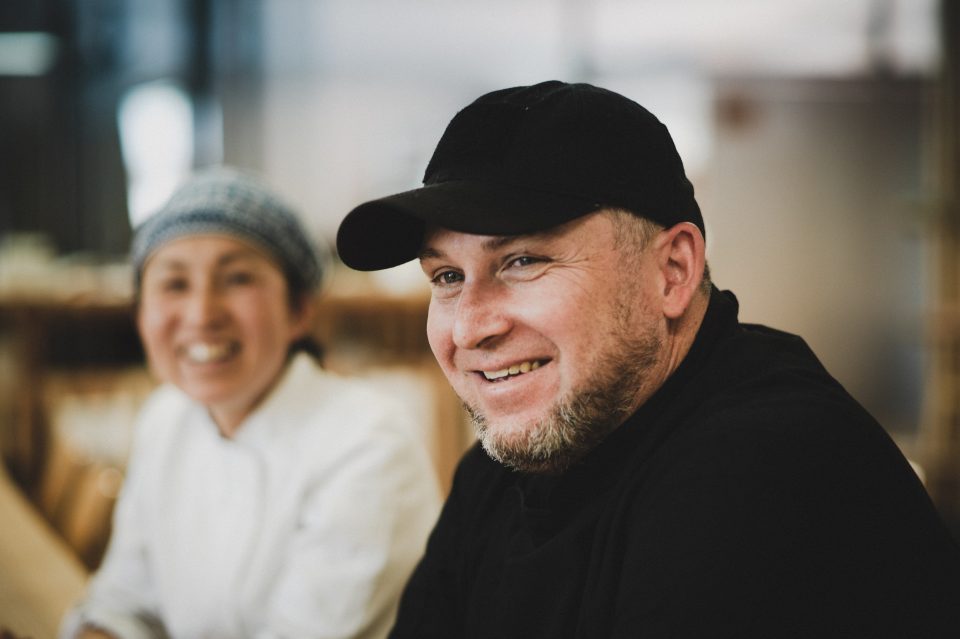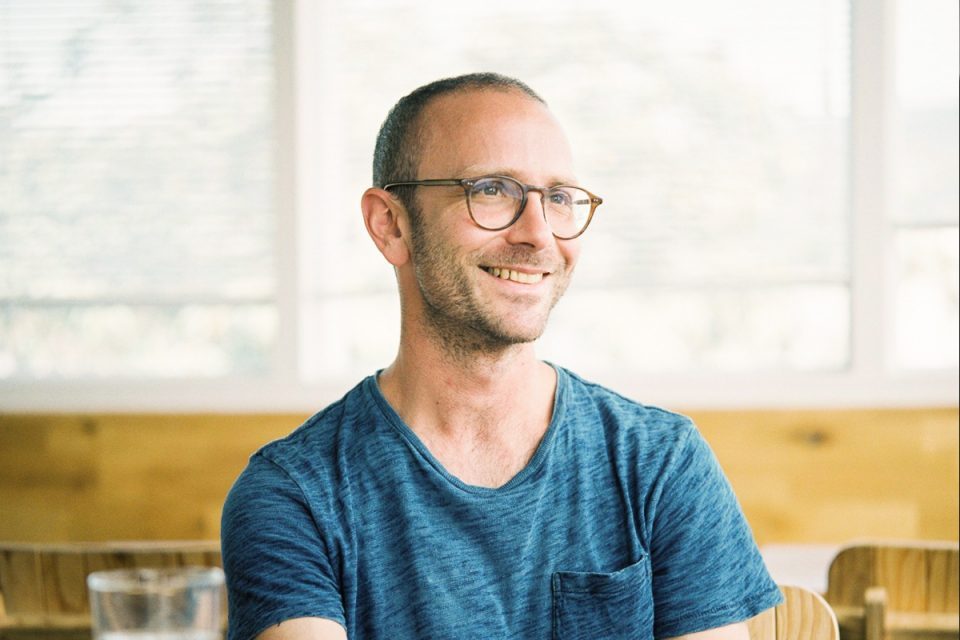Vol.01
Why are you here?
From other countries, to Kamiyama
People often remark that there are a lot of foreigners in Kamiyama, but where did they come from? What is it like for them to be living in this town?
Episode 4
Yamandu, Jeannine, Quynh from Nederland, USA
April 27, 2020 release
Yamandu Roos*1, Jeannine Shinoda*2, and Quynh Vantu*3 are three former Kamiyama Artist in Residence participants. In spring of 2019, as they were all visiting Kamiyama, so I took the opportunity to ask them, "What makes you keep on coming back here?" and many other questions.
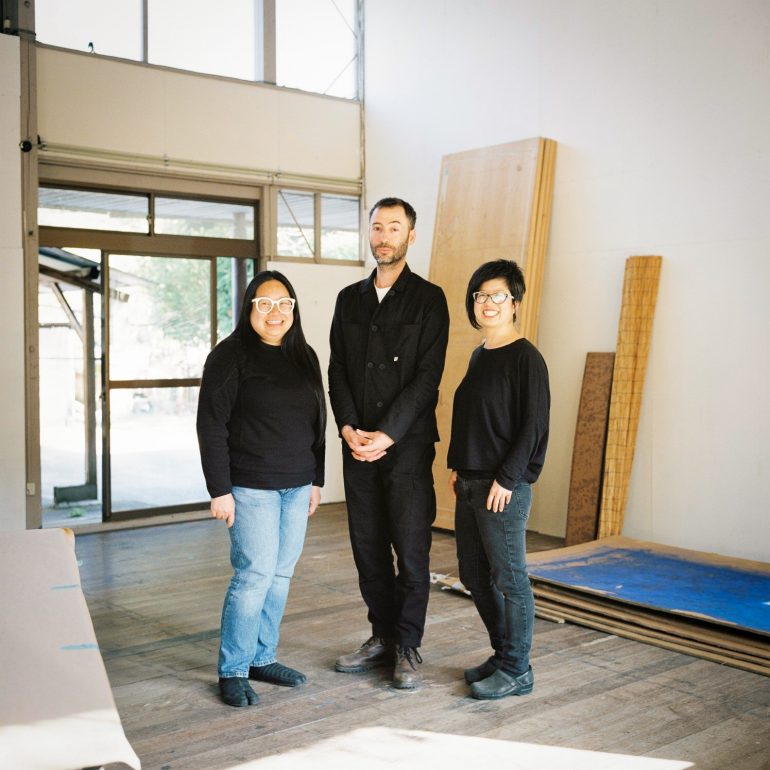
Kamiyama Artist in Residence *4
Every year, three to five artists from around Japan and the world are invited to spend approximately three months in Kamiyama making art with the support of the community. Artists interact with local people while making art, and there is a final exhibition at the end of their stay. The Kamiyama Artist in Residence Committee is run mainly by NPO Green Valley, and is an international cultural exchange endeavor that has been running since 1999.
The Artists Who Keep Coming Back
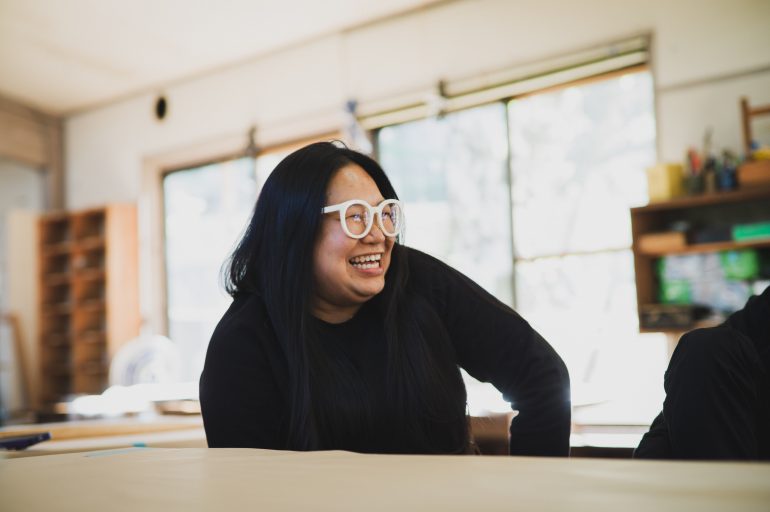
QuynhI’m from Virginia, in the US. I am currently based loosely in London right now. I guess you can also say based loosely in Kamiyama too, because I have my things here. My first time in Kamiyama was in 2015. Here, I was able to do the work at outside of the Kaizen center called “Kyokai – inside / outside”. It’s the porch – engawa, a pavilion a bit more like a public space for Kamiyama.
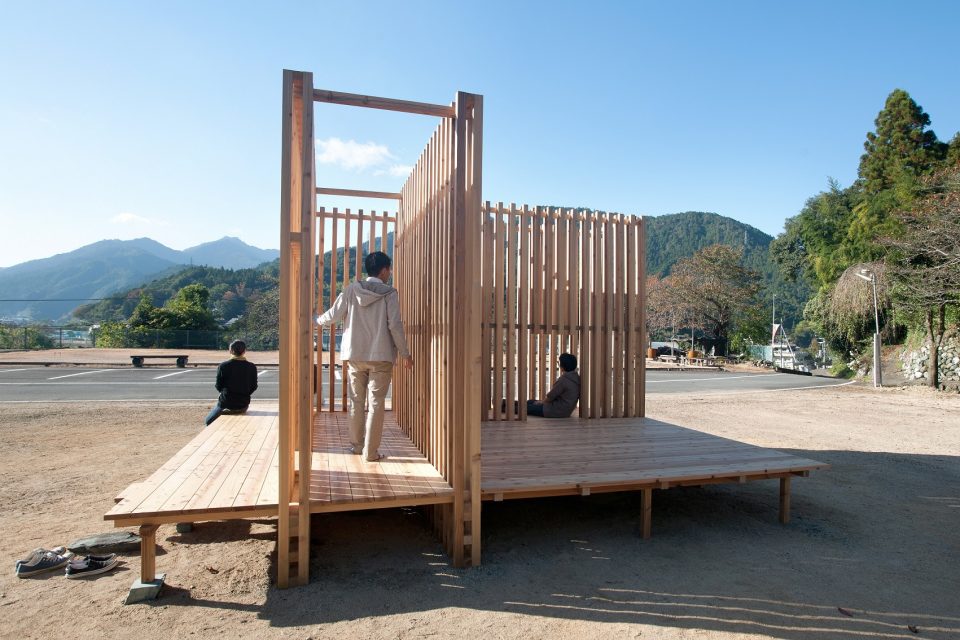
Quynh Vantu 《Kyokai – inside/outside》2015 Photo by Keizo Konishi
QuynhThis time I just arrived two weeks ago, and I have another a little over one week left. I was just here last winter and spring for almost 6 months with another fellowship. I continued a project with developing the site plan for the pavilion I created at the Kaizen center. So, that was Phase 1 and I’m still working through Phase 2.
But right now, I’m also finishing my Ph.D. in London. Kamiyama is a good place to focus on writing, so I’m doing that in these couple of weeks.
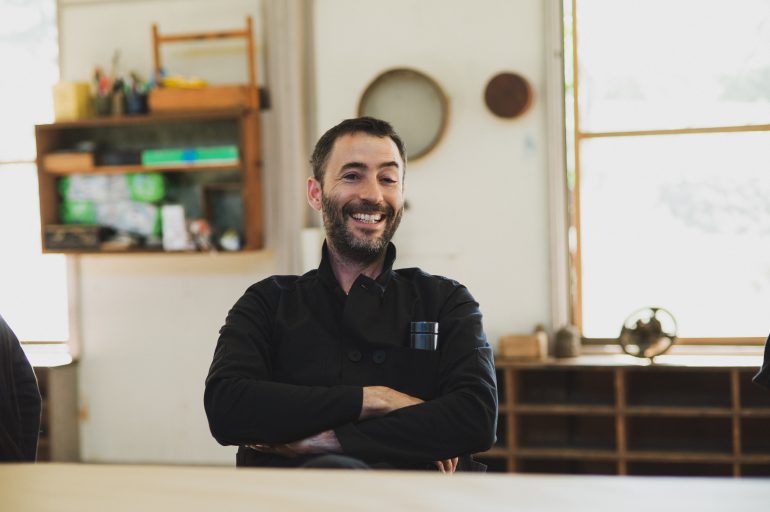
YamanduBorn and bred in Amsterdam. I got to Kamiyama for the first time in 2015 when my friend Nik Christensen (KAIR2013 invited artist) was here, so I was here to visit him for 2 weeks. So, it was like a mini residency.
In 2017, I did the Bed&Studio program. In 2018, I was here with the KAIR program.
I made different things. I made a movie, photography, prints, installation, and I did the block project.
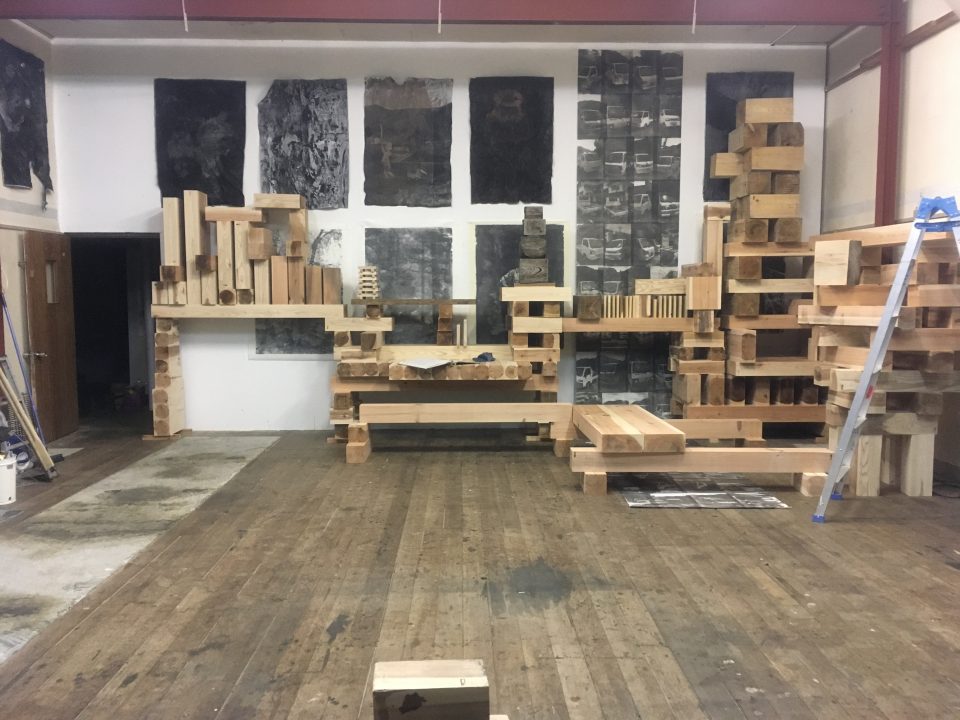
Photo courtesy: KAIR
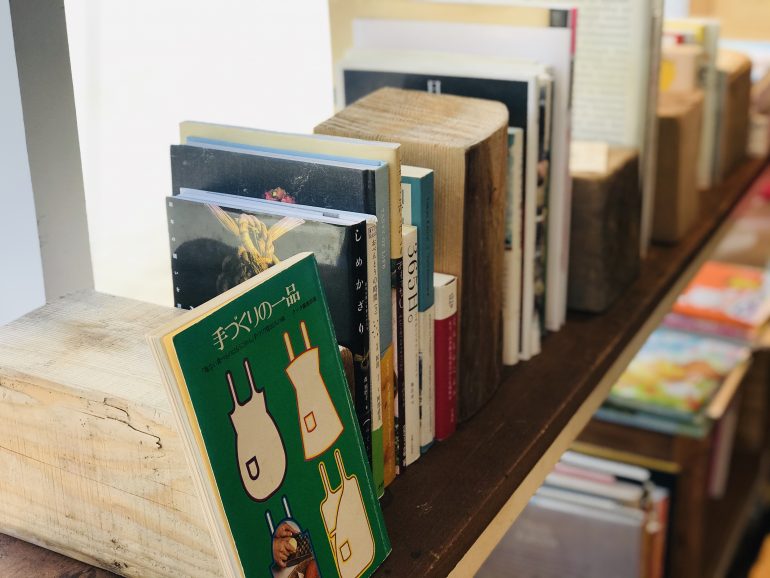
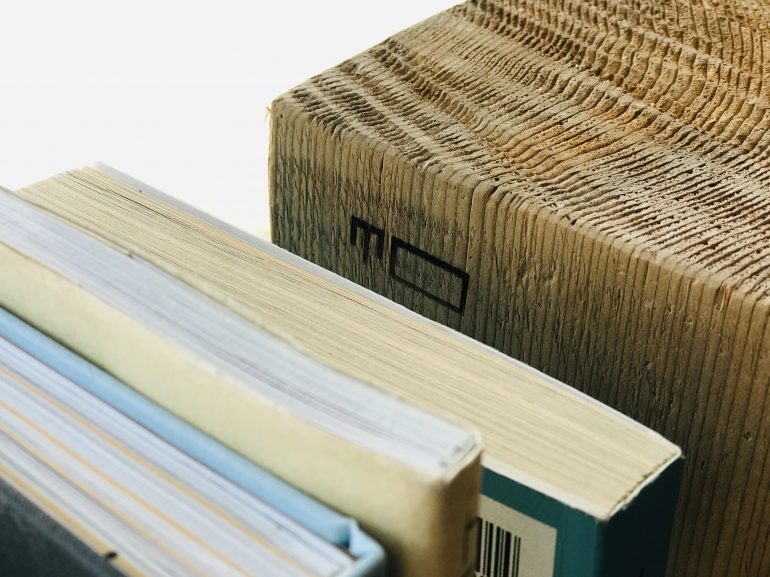
Photo: Yoshiaki Nishimura
During this time, I’m doing what I want and there’s always some result. I can’t really tell at this point. I’m staying from March 20 to June 14th for 3 months.
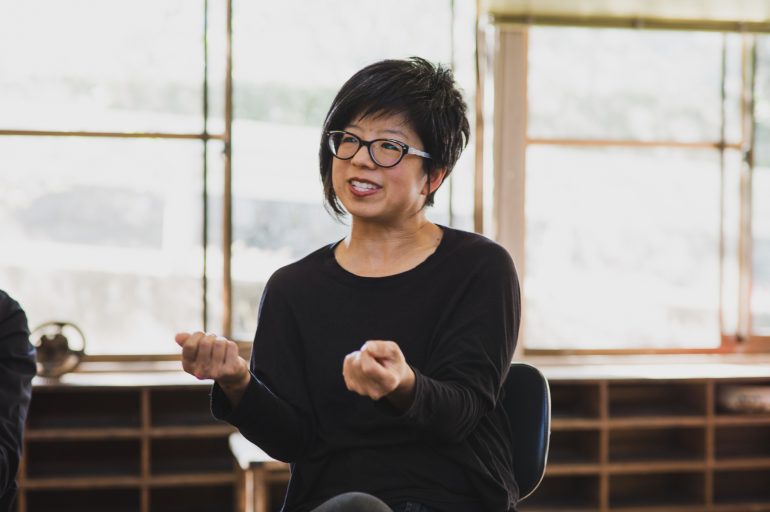
JeannineI’m from the United States. I’m partially based in LA and Utah. I have a storage unit in both places.
The first time I came here was in 2016. I worked on simultaneous installation projects that had to do with gravity and balance. It was a collaboration; between the two sensations of floating versus the heaviness of gravity; and in using local materials, local ceramics and objects gathered from the town. I was really drawing inspiration from people and what they collected, the ideas of fracture and breaking, then I made the installation here.
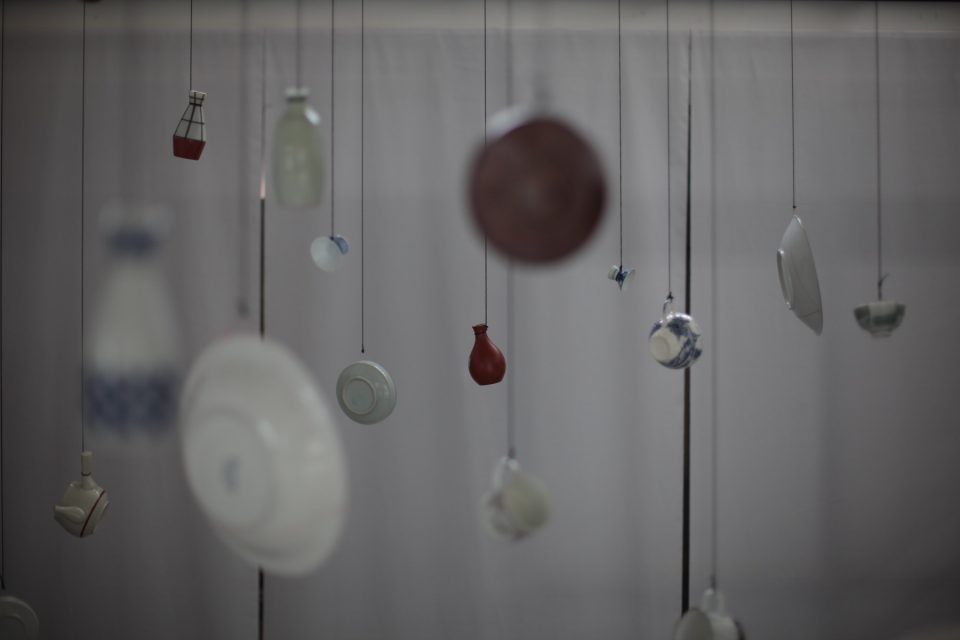
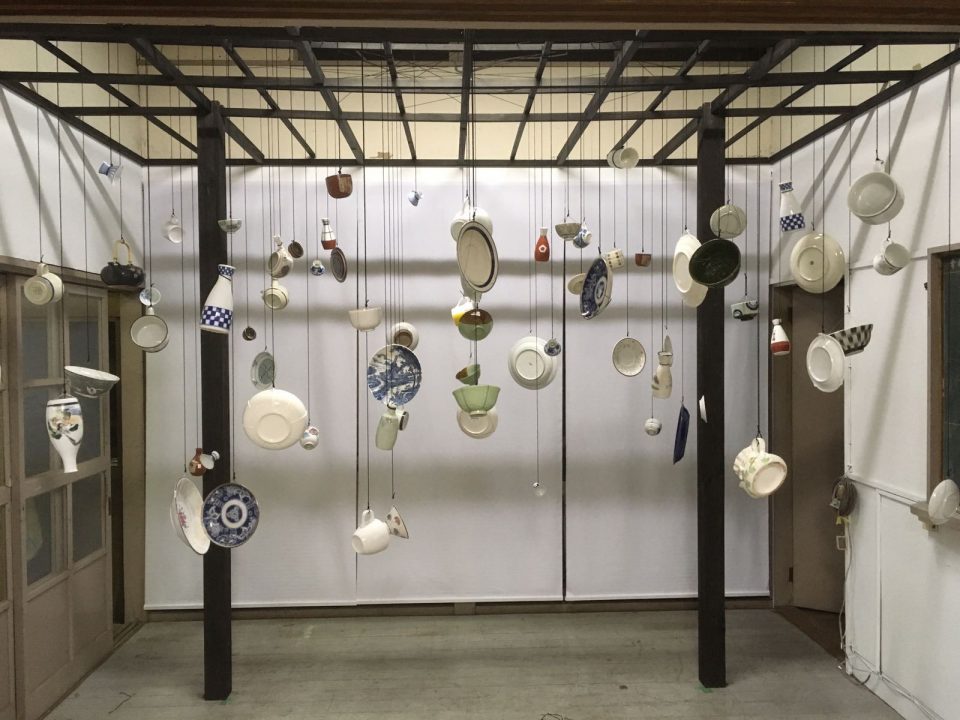
Jeannine Shinoda「Life in balance」2016
This time my trajectory has shifted a little bit more. Both those projects were performed only here; more of a performance created with interactions with people where they are forced to cut strings and watch the ceramics breaks. I shifted to be more performative with food. So here I’m focusing on the performance that uses food as its medium.
I see that’s why you help Gomi chan at her Bento shop. Now, it makes sense.
JeannineYes. Everyone who saw the Facebook post asked, “what are you doing with Gomi chan?” I’m just helping her out. But for me, it’s mainly about the people here, the environment, the context of agriculture and the nature that surrounds Kamiyama are what I draw inspiration from. I just feel the first time you get your first taste, and then the second time you know a little bit more. So, I feel like the second time around, you know the community better, and it makes me feel like I can do more now.
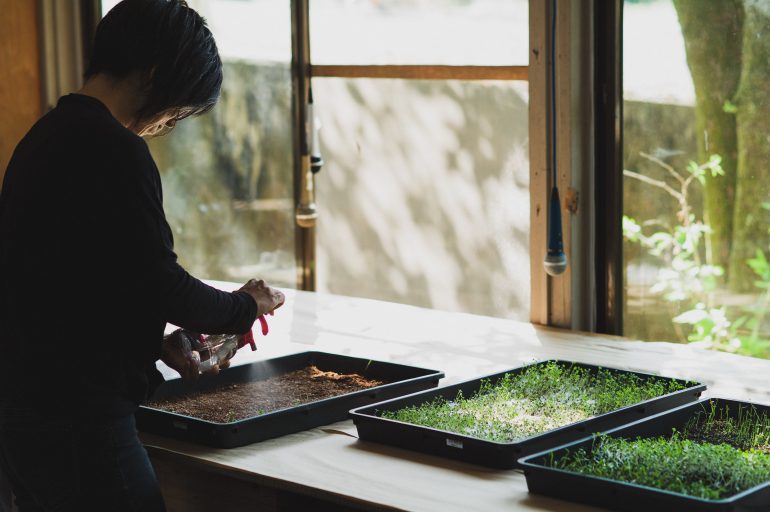
It was fun, even with a language barrier
What does Kamiyama mean for you?
QuynhFor me, I had always wanted to come to Japan. 2015 was the first time I came to Japan. I wanted to stay a little bit longer as well. I was really interested in the traditional architecture with the research I was doing for my Ph.D. I was looking at the threshold in architecture, in-between spaces and things like that. I feel like Japanese architecture is very articulated in that way. So, I took three weeks to travel first before arriving in Kamiyama.
Throughout my travels in Japan, I just felt this wonderful hospitality in general. But in particularly in Kamiyama, I felt people were very open, very welcoming, and it definitely made me feel at home here which was important to me. Because I’ve been living a pretty nomadic life, so having a place that welcomed me was very heartwarming. So that’s what I think of Kamiyama and the project just evolved from that.
YamanduSo basically, Kamiyama for me is like a playground – the epic playground. My main craft is the photography, after I finished my “Europeans” book that was a big 10-years project driving around Europe, I wanted to set myself free and do stuff without much consideration. Kamiyama for me allowed me to really open myself up.
You can flip flop to the atelier, and you can walk up the street and there is a big wood mill. When I was driving around the town, I saw a bunch of scrap woods in the container at another factory and I asked the owner if I could have those scraps of woods? He was like “Yes, you can have them!” He was happy that I was taking that woods because they usually pay to get rid of it. I took them and they turned into the toys for kids.
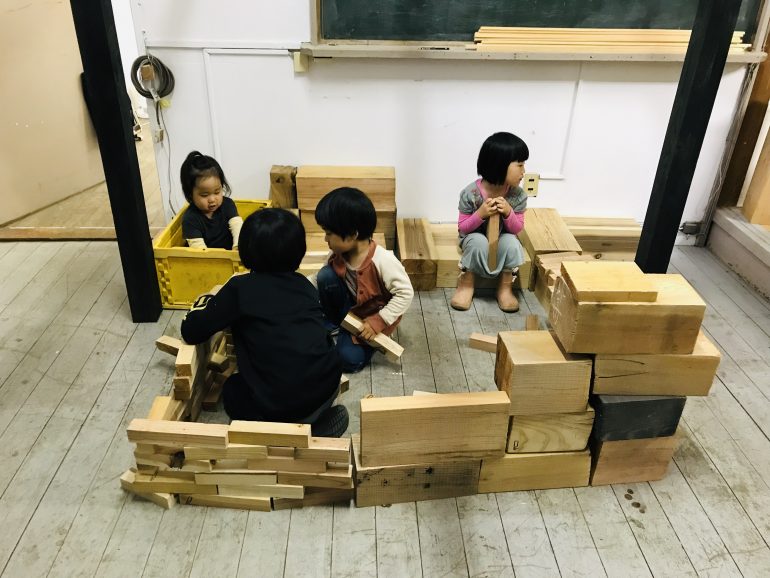
Photo: Yoshiaki Nishimura
YamanduFor me playing is like the most important thing in your life, not to be serious about anything. Because I guess it’s the best way to embrace our privileged life that we are made of. We are all privileged, everybody in this space is privileged compared to billions of other people who are not to be privileged in this world. So, I’m trying to enjoy life to be the max. So, Kamiyama gives me a lot of opportunities to play.
It’s not just only Kamiyama where you have a playground.
YamanduYes. In Amsterdam, I also created my playground. But we don’t have a K-truck in Amsterdam. And we don't have five wood mills in one village. In Amsterdam, I don’t have an atelier and here I have this huge atelier that I can use it that is right in front of the house. Basically, Kamiyama is the place where you can be refresh by the air, you have all these cool things and you can really be in touch with the countryside in a deep way. So, you could say that Kamiyama is a big atelier and this is another atelier that is kind of about using everything and mixing it together.
JeannineKamiyama was my first trip to Japan. I’m half Japanese, sansei in the United States, so it’s been generations. When I was growing up, I had very little connection to Japanese culture because I grew up in Dallas, Texas where we didn’t have a large Japanese population. The rest of my extended families who were Japanese were living in California. So, I’d never got to understand Japanese culture through my family, just a little bit because my grandmother lived in the same town. I had a very different understanding of what it was to be Japanese. I had a certain fear of being in Japan because I had a fear of being judged for some reason because I’m also half Chinese. So, I’m half Japanese and half Chinese. I wasn’t quite sure how Japanese I was or how I fit into this culture.
Coming here was very amazing for me to understand a part of myself, a part of my identity that I didn’t understand before. So, I was like I’m very Japanese. I thought I was very American and Chinese, but I see so many things are so Japanese about me that I didn’t realize it. That was to me was an amazing revelation for me to come to Japan and to come to this community to understand myself a little bit better.
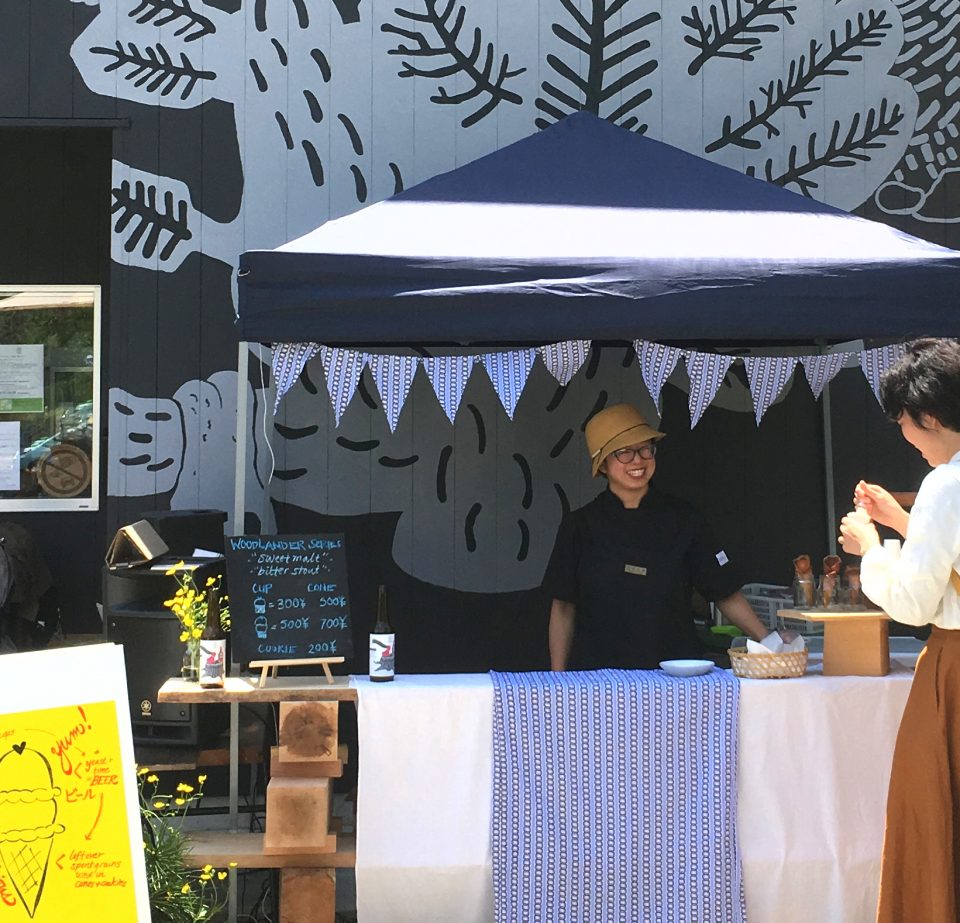
Photo courtesy: KAIR
Some things about this place make me feel more open and freer with my thoughts. Because of the supportive atmosphere here, I can work with my ideas quicker and I can experiment and take more risks because I feel more supported and that doesn’t happen everywhere else.
In some other places when you are making artworks, their stakes are higher, you feel there is judgment and pressure – all these things for me that I can’t block out. Here, I feel like I’m more open, a lot more open in Kamiyama in particular. That’s why I love this place. Because the community supports what you’re doing. They are more friendly, and you feel like you can take more risks, and know that you can fall and it’ll be okay. I just feel like I can do something and that I can mess up. That’s an interactive process that can make progress.
QuynhI’ve been on two other residencies in Japan, one in Aomori (Aomori Contemporary Art Centre) last fall and one in Kitakyushu at CCA(Center for contemporary Arts Kitakushu). I mean I still love Kamiyama. It’s still my favorite.
YamanduDon’t say that!
QuynhHonestly, of course, I was excited to visit other areas of Japan and get to know other places as well, but I think in the back of my mind I was thinking, “Oh, it's not Kamiyama” so…
What part of Kamiyama made you to think this way?
QuynhIt’s the community. It’s really the community that community connection in Kamiyama. I think that the residency has been running so long here, more than 20 years, and just knowing the founding members and how it was organized made it special. Because other institutions that I have been a part of, they are institutions.
Everybody would say to me, “oh yeah, you were in Kamiyama. I hear they don’t have a curator, but they have been running for a long time…” Everyone was very curious about Kamiyama.
I explained that it’s a very community-based AIR, and it was started by the community members. It’s a huge difference in how other organizations approach this kind of artist residency. It’s very different how the community gets involved and what they're looking for, as this kind of exchange with international artists is different than some of these other places in that regard.
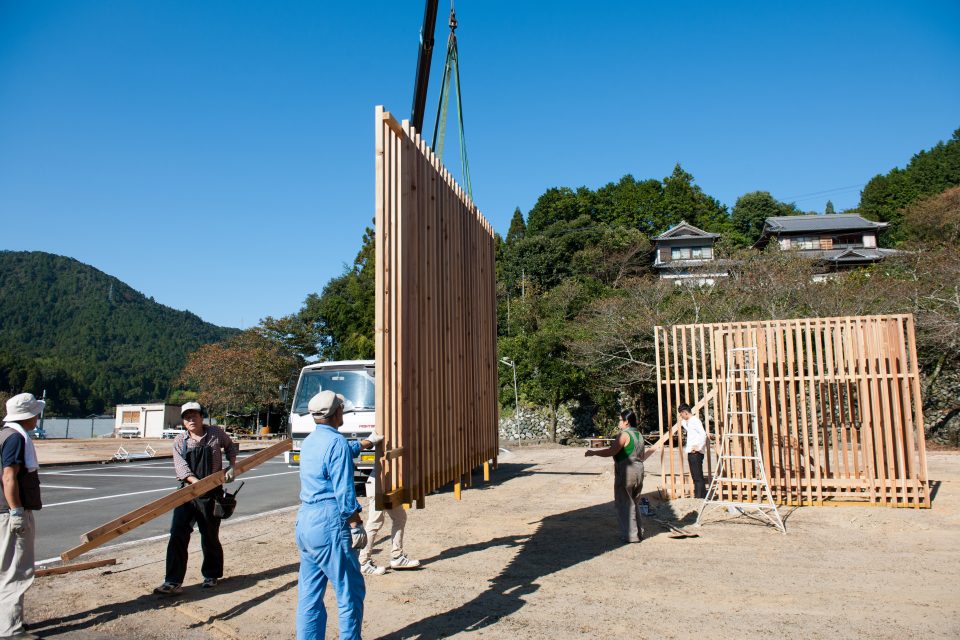
Photo by Keizo Konishi
YamanduMaybe it’s because of the big variety of people here. All sorts of people from different parts of Japan. It’s not only rural here. We’re all city people. If it’s only rural people here, it may be more difficult. Because there are other city people that we can relate to, we have a combination here.
So, you feel comfortable communicating with the local community in Kamiyama?
YamanduYes, but we don’t know how to communicate with each other. There are no words. I just hang out there. I guess my camera is a way of communicating. Sadly enough, I don’t speak the language.
QuynhBut that’s also something nice here though. Because even without speaking the same language, people here, they want to communicate. So, you find some way to communicate with each other. I can go to Paris and use my French and they would be like “no, no, no, we’re not doing that.” I can speak some French, but they don’t understand me.
How do you explain KAIR to those who don’t know anything about KAIR?
YamanduI try not to spread the word.
QuynhYou keep it your secret playground.
Well, Artist in residencies gives artists time and space to create works of art. Here we have a final exhibition which is the way we will show our work. Well, actually with KAIR – a difference I felt here was because when I learned that the founders were really interested in the process of the artists, maybe from seeing final works of art and saying, “oh, how did they even come up with this artwork?” I feel like that this is ingrained within the whole program itself, this curiosity, and it is also process based. So, it’s very much about seeing the processes of artists, as it is to see the resulting work.
I was just working out there (outside of the Kaizen center), and people could see that my materials had arrived. It was not the time when I needed volunteers yet, but you know with basic tools and basic a lot of materials around, they were all so curious. So, one after another, Ojisans, they would stop and we would talk about tools and construction together. Things like that those things were just very nice just while I was building the work.
Even if they get involved a little bit too much?
QuynhI think it’s okay because of the language barrier. I could just say what I wanted to do, and they would say what they wanted to do. In that way, we understood each other.
JeannineOne of the cool things about this residency is that there are so many people are involved with the process. Everybody I talked to was telling me that they remembered seeing my work in the application. This is what was happening before you get here. I was not expecting 15-20 people to know what my artworks were before I even got here. I thought that it was pretty cool just to see that they take this process seriously and they spent time and they talk about it.
Because in a lot of artist in residencies, maybe 3 people have seen your artworks and nobody else knows about your artworks in the whole community. Here, it seems a lot more people understand, have questions, or are interested in your work because they have seen it before you even arrive.
YamanduHere, can you call that grassroots? Like Mori-san (owner of a campground “cotton field”/ KAIR chairman 1999-2006) has a bulldozer, Sato-san (owner of hardware shop / KAIR vice chairman 2009- ) has this and that. There is a whole network of volunteers. I think because KAIR came from 5 guys and they are the backbone of the program, the production backbone. I think it is really interesting and really special about KAIR.
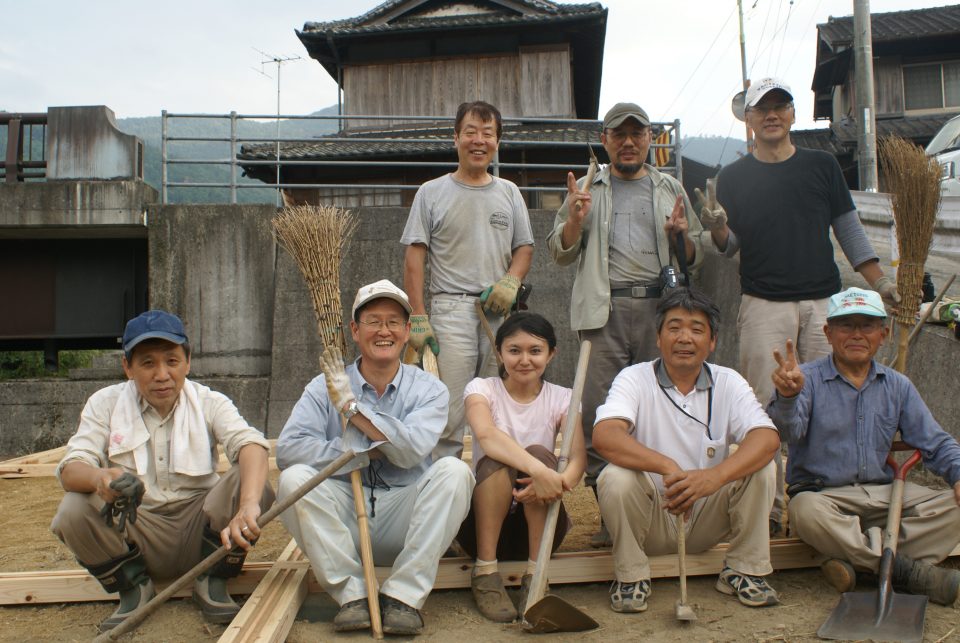
Photo courtesy: KAIR
That’s good to explain what the community is capable of. You have these art, fine art, curator, people from the art scene, but these 5 guys are none of that but at the same time they made it happen.
So, it’s also a beautiful collaboration between art and just people who are interested who are not necessarily coming from an art background which I also think makes it beautiful. That is also a very interesting thing about KAIR.
QuynhThen it goes back to “community.”
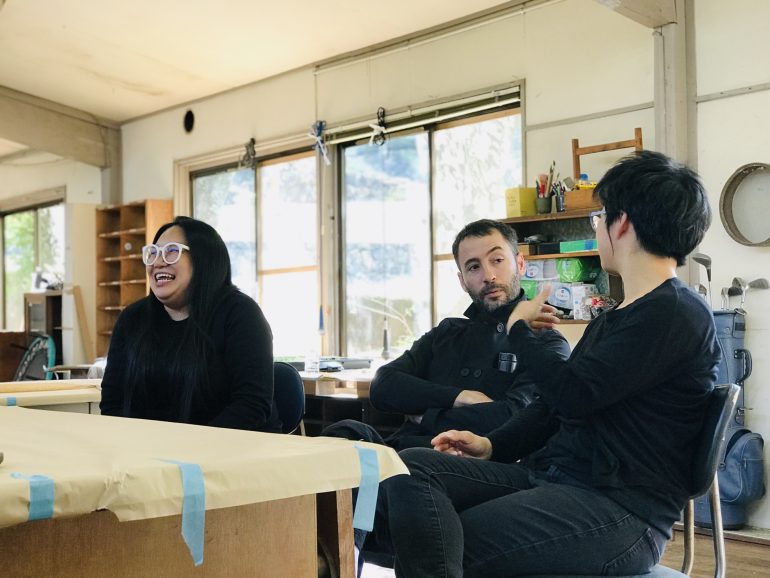
Photo: Yoshiaki Nishimura
Do you think about Kamiyama when you’re away from here?
YamanduYes, all the time.
QuynhJeannineYeah.
YamanduLike when I can get back to Kamiyama!
JeannineFor Quynh and I, ‘home’ is more like a nebulous concept. For me, my home is like where my communities are.
QuynhI’ve been nomadic for the past 10 years so I’m constantly looking for a home. So, I just felt very welcomed here, so it’s nice to return.
YamanduI think the first two BBQs were most impressive for me because everything was new. At the river house, Izume san was still here and he was playing hip hop records on his turntables and Yu-kun had a piece of meat coming by post. I was like okay this is it, man.
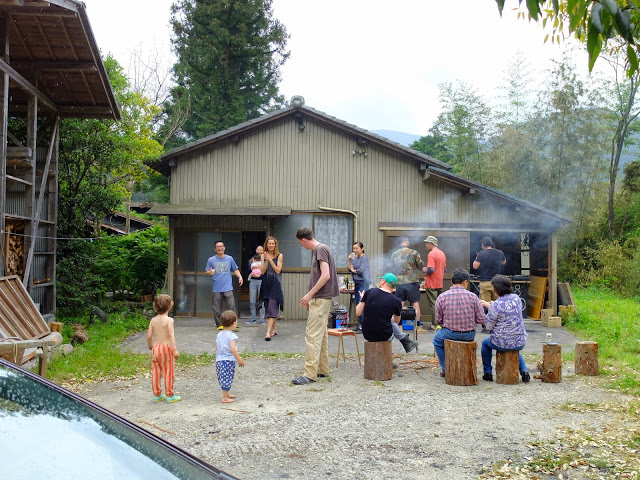
Photo: Andrea Bergh
There were young people and older locals. Everyone was enjoying time there with hip hop playing in the back. Nikolai (the leader of forestry project) was dancing. That was very unforgettable. And of course, there were many more. There were like hundreds of great moments. But I think this one is nice to mention.
JeannineI think for me it was in my first residency here because Maki (KAIR2016 invited artist) was here. She was very social, so every night there was a dinner party. Every night, there were a different group of people from Kamiyama who came to eat dinner. I just showed up with one dish and I met like five more people from the community that I didn’t know.
I thought that it was a very beautiful part of my time here because I got to share meals and got to meet people. All mainly Japanese but I was okay with hanging out with people and not understanding half of what’s going on, because it was fun. It really creates wonderful things.
Two programs – “KAIR” and “Bed&Studio”
YamanduI think there’re big differences between Bed&Studio and KAIR.
KAIR program, everyone is focused on the presentation and it’s more of a team effort.
B&S program, you’re given to the facilities to do stuff but it’s not like everybody is ready to support to help you to do your stuff. It’s not very easy to have big things happen.
B&S is more of a personal thing. You’re given support, but it’s in a different way. This B&S program is giving myself the space to do work without focusing on the result, so it is about having have more concentration rather than being more results focused.
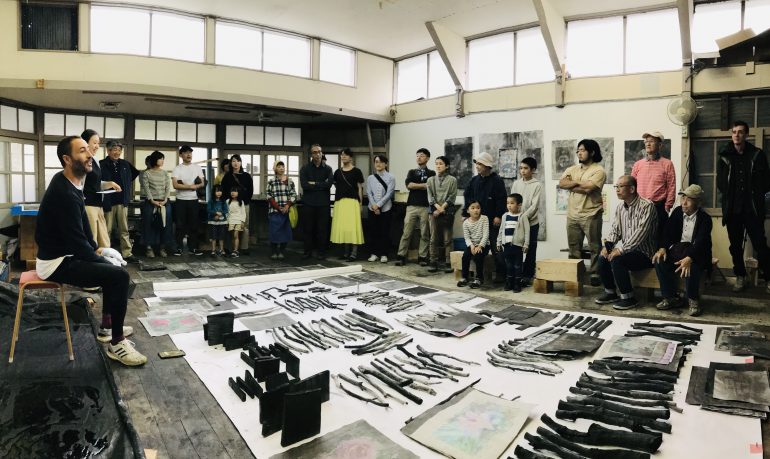
Photo: Yoshiaki Nishimura
QuynhIt’s the same for me, too. For my Ph.D., it’s a really good place to do it. London is a little too distracting for Ph.D. writing.
JeannineB&S is less pressure and expectation (from) to produce, more to be yourself, a lot more about being yourself – self-development as an artist and what you want to get out of, something rather than creating the products.
It’s nice though, to take the pressure off; because as an artist you’re constantly thinking, constantly working, evolving, so it feels like you can do it in a different pace and give yourself a little bit more time.
YamanduAir is good here.
JeannineI also like walking out at night and hearing sounds of a lot of frogs.
YamanduI love the silence before they come. Then it’s gonna be so noisy. I’m the opposite of you.
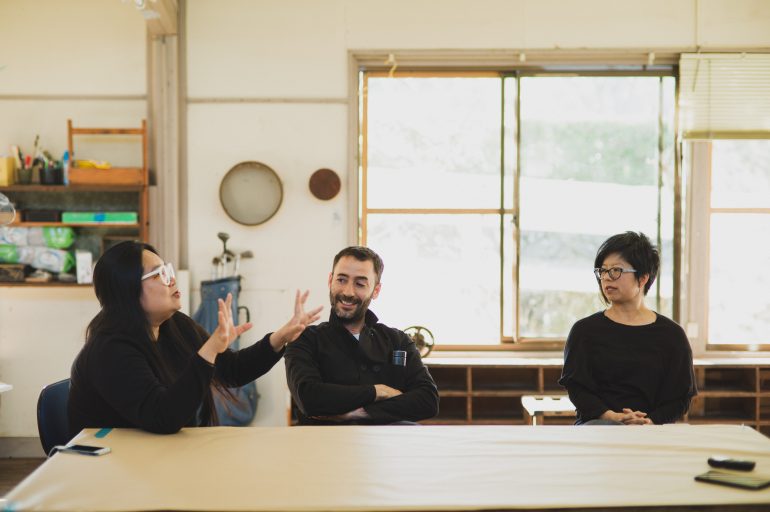
The person who manages the residence program is program director Keiko Kudo. She is the one who has, little by little, assembled all the details that these three chat about with delight. We’ll also hear from her.
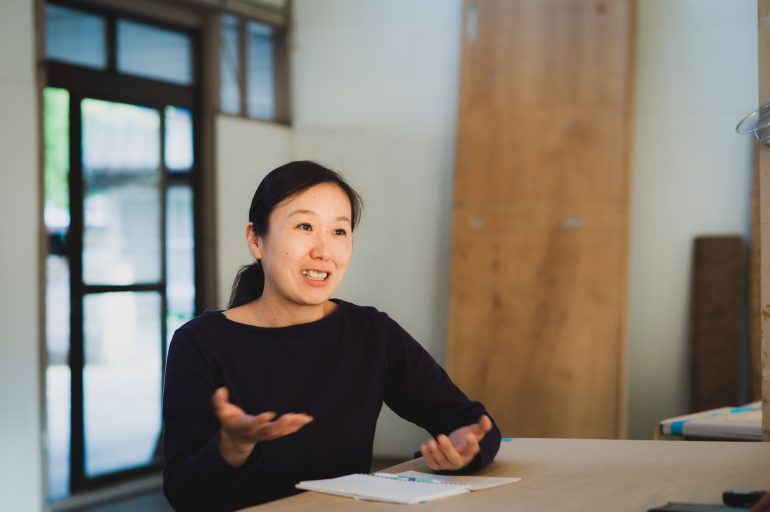
What is your background?
KeikoNot art. (laughs) I hadn’t taken an art class since junior high, and I was never really an art lover. I was born in Yoshinogawa City, Tokushima, and I have been working at NPO Green Valley since 2007.
At first, my position was more NPO office work and KAIR was just one part of that, and I acted as support staff and interpreter for English-speaking artists. But after the first year, I realized that there wasn’t really anyone else doing the work that I needed to do. I decided to start learning more so I could speak more knowledgably. The visiting artists really taught me a lot.
When I was a high school student, I went to the United States. I spent several years there, and a lot of people were very kind to me. Friendly people welcomed me warmly. That experience influenced me a lot. When I found myself in the other side of that equation, of welcoming artists to Kamiyama, I wanted to support them in a way that would make them feel glad they came. That is something I have felt ever since I applied for the job.
Hospitality.
KeikoThey had come all this way, so I wanted them to be comfortable during their stay. That definitely has an impact on their artwork, and if they are happy while they are here, that makes my job easier too. (laughs)
I try to make time to communicate with the artists as much as possible. Not every day, but I think we meet at least once every two days. When we talk, I can get a sense of how they are doing, and I can predict, “they’ll probably need some help with this in about a week” and so on, and that makes it less stressful for me, and I think it’s less stressful for them, too.
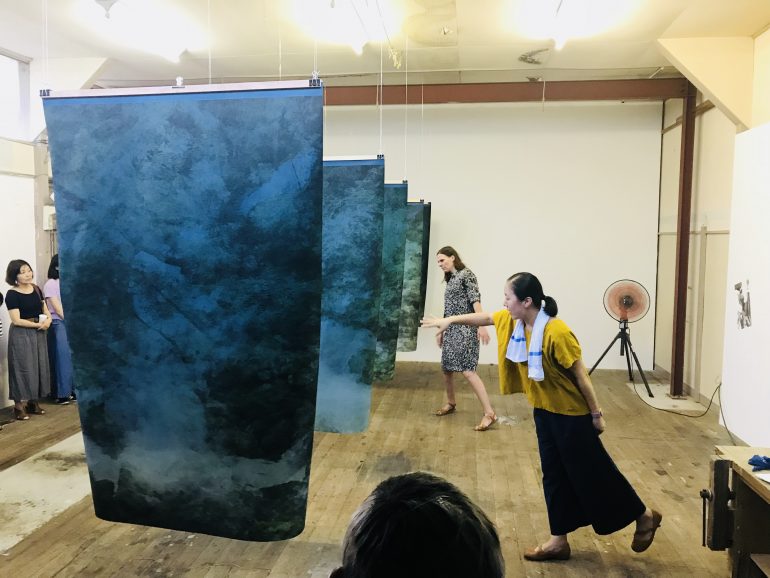
Photo: Yoshiaki Nishimura
Even if it’s just for a moment, if we can see each other face to face on a regular basis, I can see how they are doing. It goes without saying, but it’s better to make up a reason to go and see someone rather than just assume that no news is good news. That helps make things easier further down the line. Even artists who want to concentrate and are happy working alone probably like to have someone to talk to at the end of the day.
What was it like to listen to the conversation between the three artists?
KeikoEverything kept coming back to “community.” The KAIR activities are not just the committee, but all of Kamiyama is involved, and it’s made possible because we have this town. The program is what it is because of every single person living here. That was one thing I realized anew as I listened to them talk.
You meet people during your stay and greet them as part of your daily life. You have little conversations with the people who work in the shops. I think those little things make them very happy, and they’re things you can’t experience in other residence programs. It’s sort of a “Kamiyama-esque” quality.
The other day, I went to Hidenoya (a restaurant and inn) with Quynh, and I think it was a man who works at the concrete plant, but he said, “You’re that girl from before, aren’t you?” They had only met one time and it must have been two years ago, but he remembered her and spoke to her. I think things like that are possible because we have such a small community here.
It’s a big difference compared to a facility-centric residence program.
KeikoYes. Little things like that add up, and I think it makes them feel satisfied, which then leads to them growing to like Kamiyama. When I talk to people involved in other art projects and residence programs, many people are surprised to hear how many people come back to visit. For us, it is natural, but I think it is actually a very special thing.
In Kevin’s case (Kevin Yates, 2011 KAIR participant), he brought his son Buckley along and sent him to the local school during his residency. Recently, Buckley celebrated his 18th birthday and his present was a trip to Kamiyama, so he was able to visit his old friends who are now in high school. Four or five of his old teachers even came to visit.
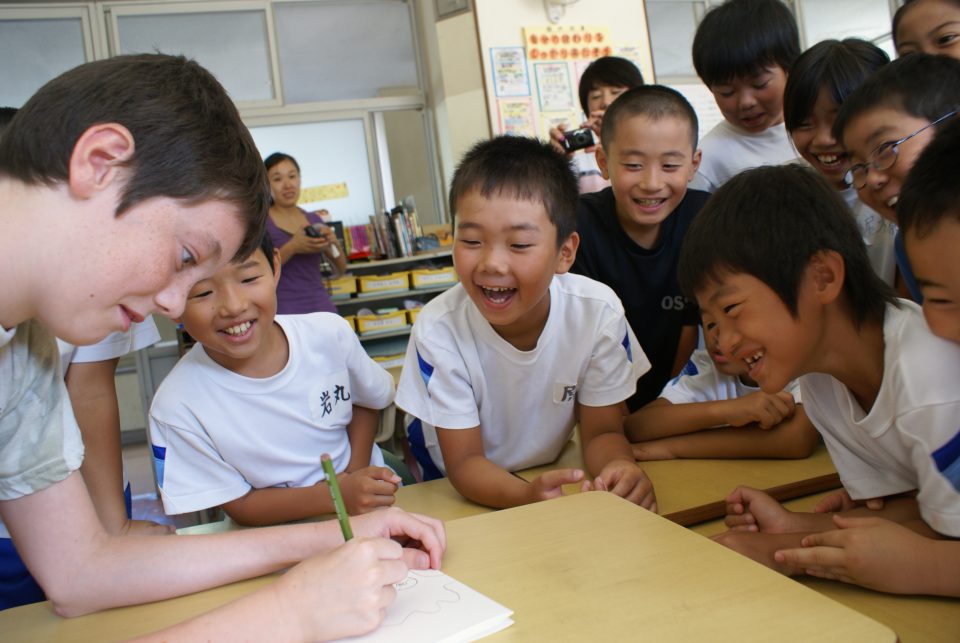
A scene from an extra-curricular class at Jinryo Elementary school. “The two students in this picture came to see him. Several of these kids here have gone to the Netherlands with the international exchange project (started in 2016). Photo courtesy: KAIR
Wow.
KeikoWe often get artists who say they can’t come for another long visit, but they’ll come for a week or maybe two. At the same time, we have artists who return for 1-3 months. But if you think about it, it’s a pretty big deal, to pay the travel and accommodation costs for a whole family. We are very grateful.
What is it about your job that you like?
KeikoI’m able to meet people who I would never have the opportunity to meet if I was just living my life, and I’m able to support their work during their stay. I think my favorite part of this job is to see up close what sort of connections come together in their art works. I don’t mind working with people, and in fact I rather like it.
If you didn’t, you wouldn’t last long. You probably didn’t expect you’d be spending so much time with so many artists.
KeikoI didn’t, and I never thought I’d become the type of person who would be seeing and thinking about these sorts of things at all. (laughs)
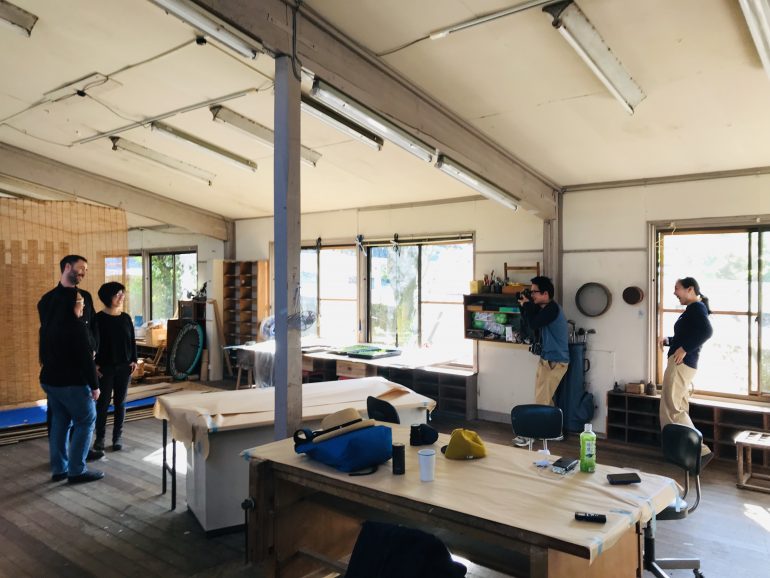
Photo:Yoshiaki Nishimura
LINK
*1 Yamandu Roos
*2 Jeannine Shinoda
*3 Quynh Vantu
*4 Kamiyama Artist in Residence
*5 Bed and Studio
Interview: April 20, 2019 (Interviewer: Masataka Namazu)
A message from everyone at NPO Green Valley and Kamiyama Tsunagu Corporation:
We're thinking of our friends around the world as COVID-19 affects us all. Let's stay in touch online until we can safely meet again.
Text: Yoshiaki Nishimura, Photography: Masataka Namazu
English Translation: Claire Tanaka
Production cooperation: Mie Manabe, Keiko Kudo, Aya Fujimoto
Planning and production: Kamiyama Tsunagu Corporation

